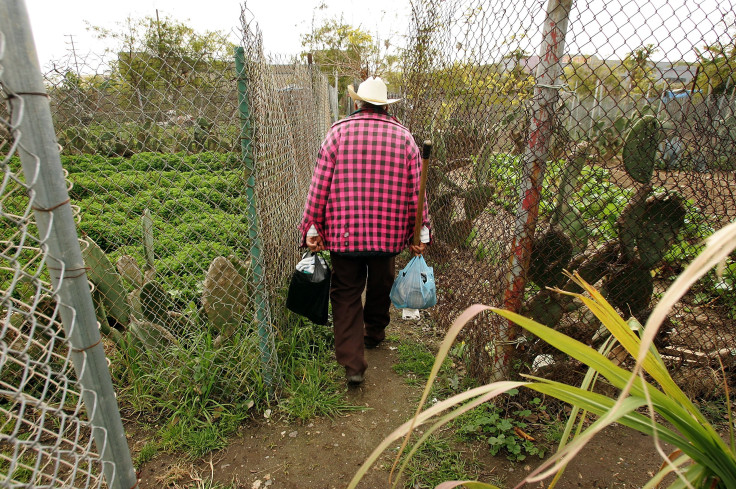
Latino communities in Southern California face disproportionate exposure to harmful polyfluorinated substances (PFAS), according to a new study in Environmental Research. Researchers attribute this heightened exposure to a combination of factors related to their zip codes.
What are PFAS or Forever Chemicals?
PFAS–also dubbed as "forever chemicals" due the human body's inability to break them down–are linked to various diseases including high cholesterol, low birth weight, liver disease, impaired immune function, and kidney and testicular cancer. These man-made chemicals can be found in everyday items such as non-stick cookware, toys, stain-resistant fabrics, receipts, and fast food wrappers.
Although most people in modern-day society are exposed to PFAS on a regular basis–as they are almost impossible to avoid–the new study reveals factors linked to a person's zip code can put them at a higher risk of accumulating elevated amounts of these harmful chemicals and developing diseases related to them.
Factors that Lead to Increased PFAS Exposure
The researchers studied two "predominately Hispanic cohorts," mostly Latino children and young adults in Southern California, to see how PFAS levels in their plasma are connected to a varierty of factors present in their neighborhoods, including water contamination, proximity to polluted sites, and proximity to healthy food.
Proximity to Polluted Sites
The study found that people residing near Superfund sites–defined as areas heavily polluted with toxic waste–such as factories that release PFAS, had more of these chemicals in their bodies.
The sites–which include Air Force bases and metal plating facilities Alark Hard Chrome, Norton Air Force Base, and March Air–were also linked to higher levels of forever chemicals in people's local food due to contaminated soil and groundwater used to harvest.
"PFAS-polluting facilities such as manufacturing plants, landfills, civilian airports, and military fire training areas could directly expose residents living near these facilities via air, water, soil, or locally grown food–Superfund sites pose significant health risks to nearby residents, who are primarily racial and ethnic minorities."
Proximity to healthy food
Researchers also found that people in neighborhoods without grocery stores or access to fresh food were more exposed to PFAS, possibly because they eat more processed or packaged foods, which can contain these chemicals. According to the scientists, nearly half of fast food packaging in the U.S. contains fluorine, a marker for PFAS, which can transfer to food.
"Access to healthy food options, influenced by factors like the presence of supermarkets or grocery stores, may be limited in marginalized communities, particularly among Black and Latino populations residing in food deserts. This lack of access to healthy food options can potentially exacerbate PFAS exposure in these communities."
While PFAS can also enter the body through fresh food like seafood, meat, dairy, and cheese, research shows that regularly eating healthy meals cooked with ingredients bought in a grocery store is linked to lower PFAS levels in the blood.
"Improving neighborhood food access...would be a structural solution to reduce PFAS levels at the individual level," the researchers concluded.
Water Contamination
Finally, the study indicated that people in areas with increased levels of PFAS in their drinking water had higher levels of the chemicals in their plasma. People who opted to drink bottled water instead of tap water reduced their exposure to PFAS, but even then, using tap water exposed them to the chemicals.
Researchers faced challenges in this specific part of their study as early tests for PFAS in water couldn't detect small amounts of the chemical. Since the two cohorts included in the study were recruited during different time periods, different state-level data was used to analyze their plasmas.
"Recent research has highlighted widespread PFAS contamination in nearly half of the tap water samples collected across the US, and consumption of PFAS-contaminated tap water was directly linked to higher serum concentrations of PFAS. Reducing exposure to PFAS through drinking water can potentially be an effective measure to reduce PFAS levels in blood."
What is the Government Doing About it?
There are thousands of known PFAS in the United States, and as of April, the Environmental Protection Agency (EPA) regulates six of such chemicals present in drinking water.
However, the future of this new regulation has been questioned as President-elect Donald Trump recently announced former New York Congressman Lee Zeldin as his pick to lead the EPA. During his time as an elected official, Zeldin voted against closing a loophole that allows companies to discharge unlimited 'forever chemicals' into U.S. waterways.
In a November interview with Fox News Zeldin revealed his primary focus as EPA chief would be boosting the economy. He also outlined plans to "roll back [environmental] regulations," arguing that such policies are driving U.S. businesses abroad.
Environment Research scientists urged local and federal officials to continue investigating PFAS and regulating their presence in tap water, commercial items, and industrial emissions.
© 2024 Latin Times. All rights reserved. Do not reproduce without permission.









